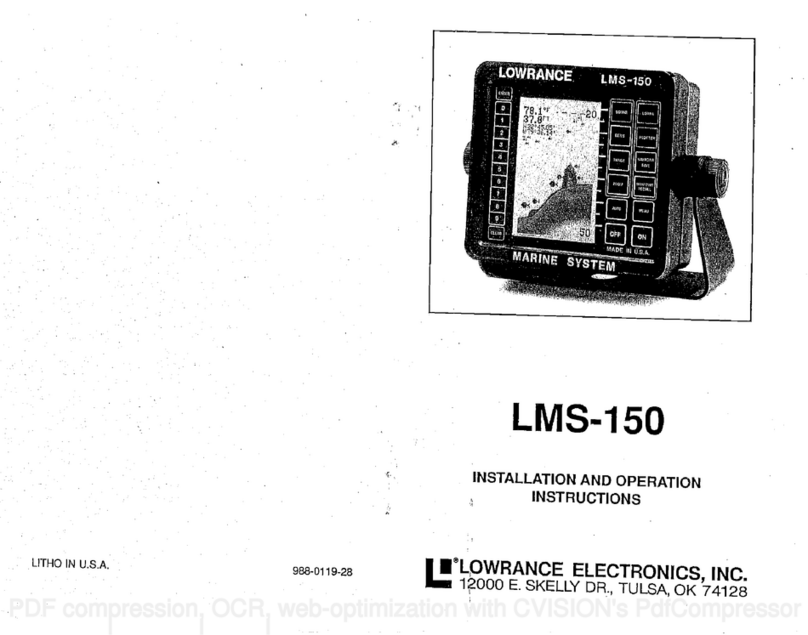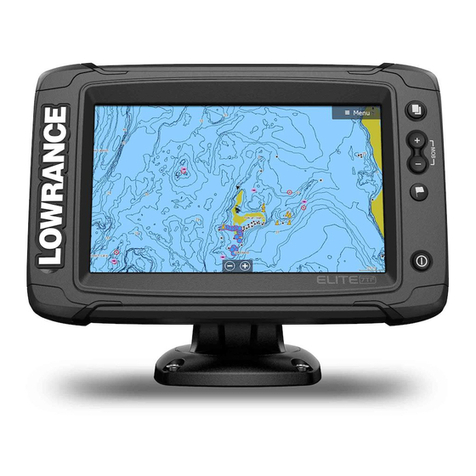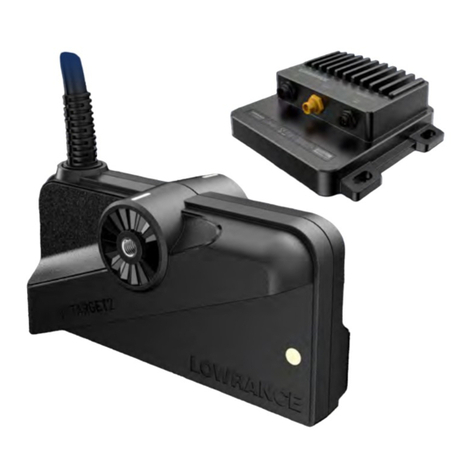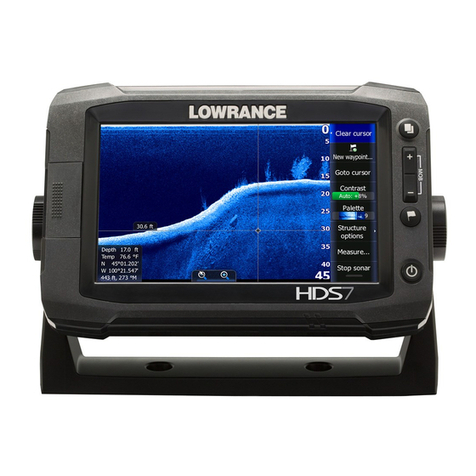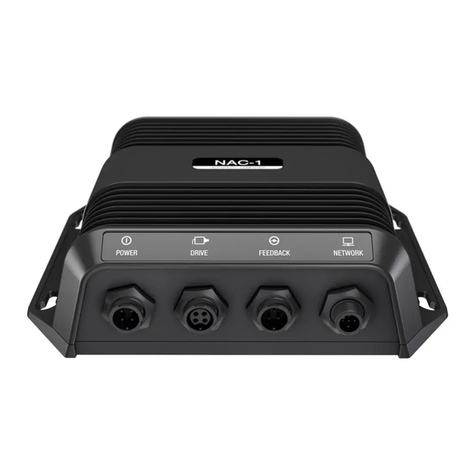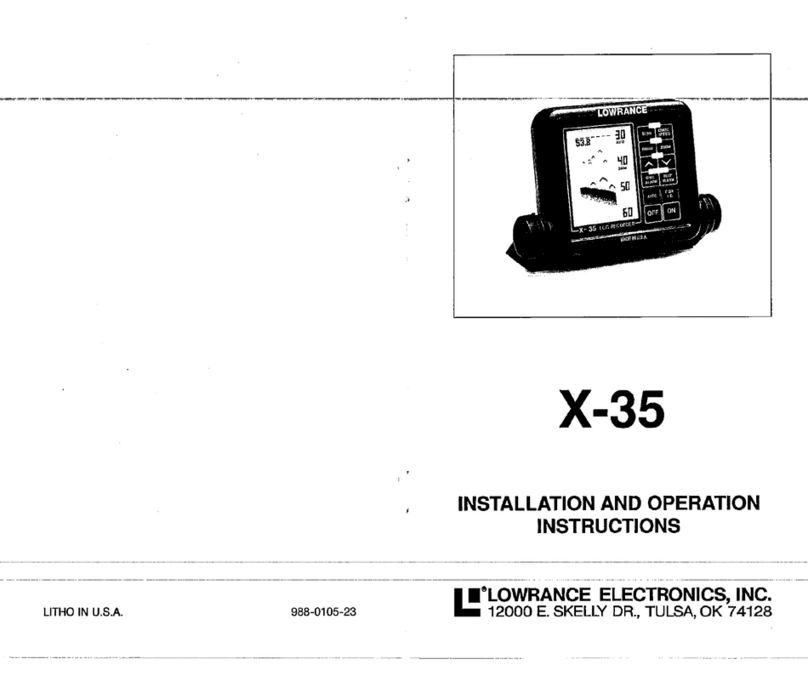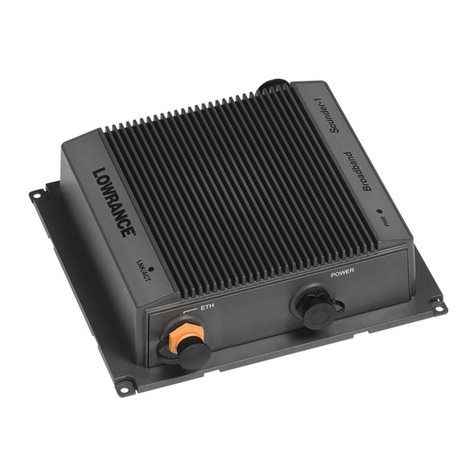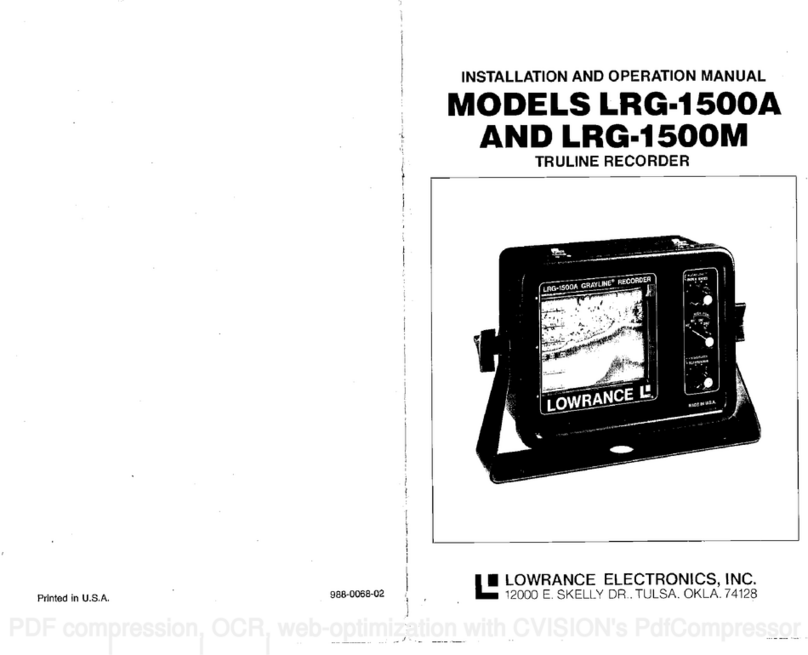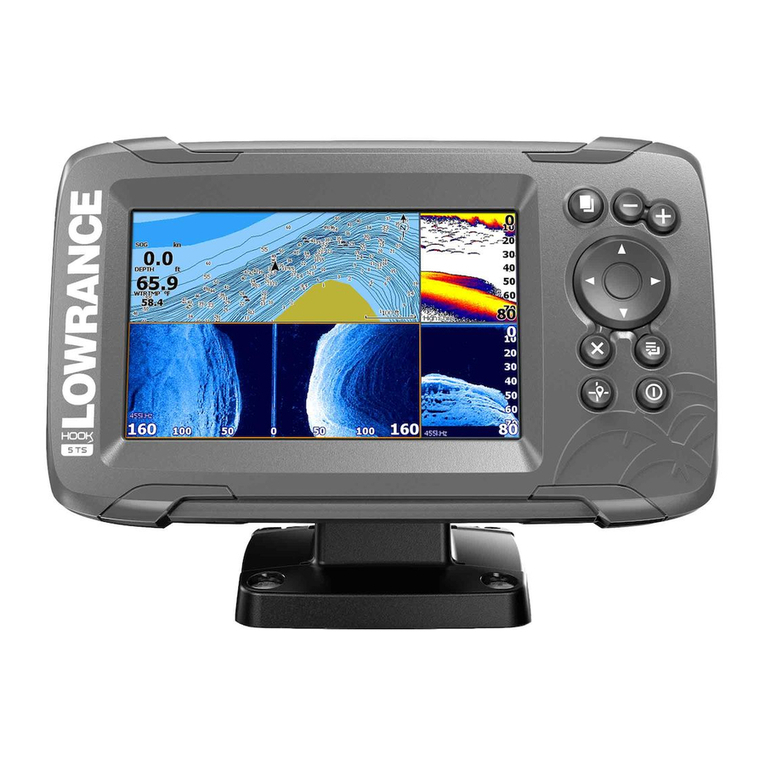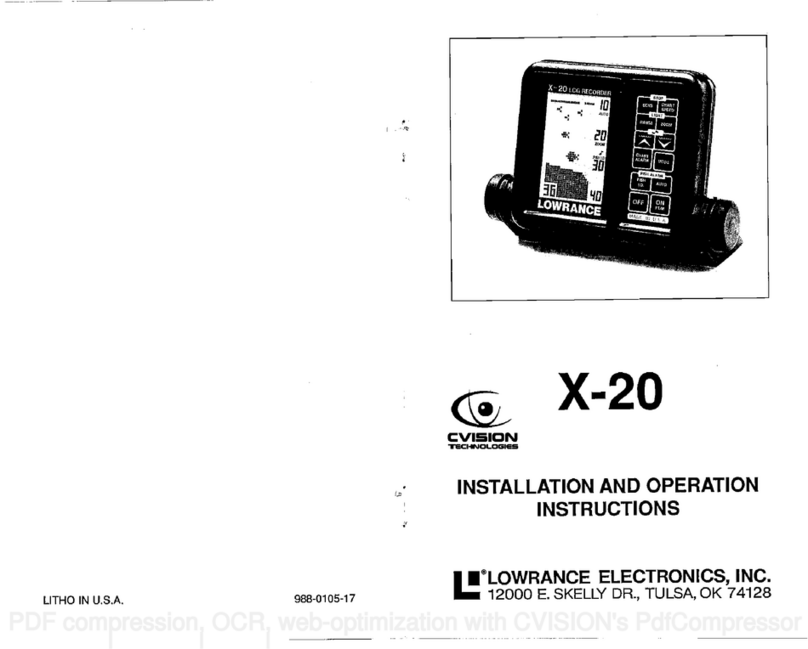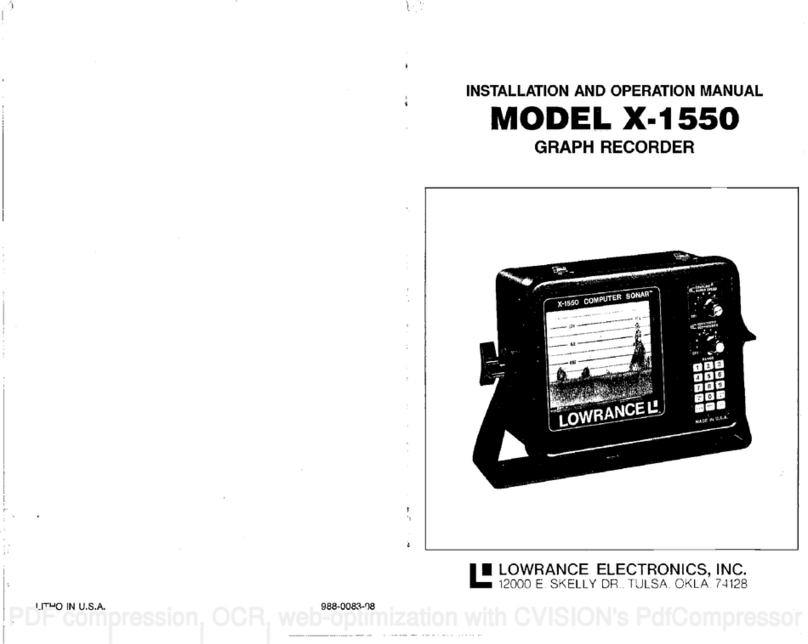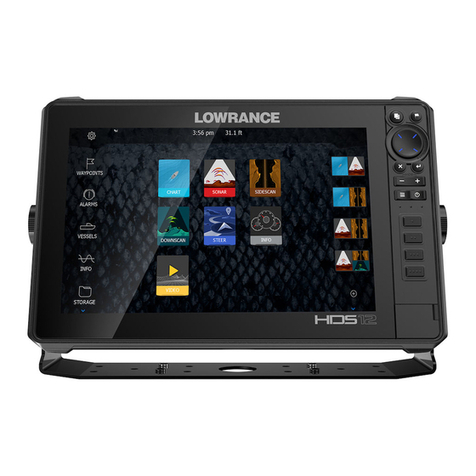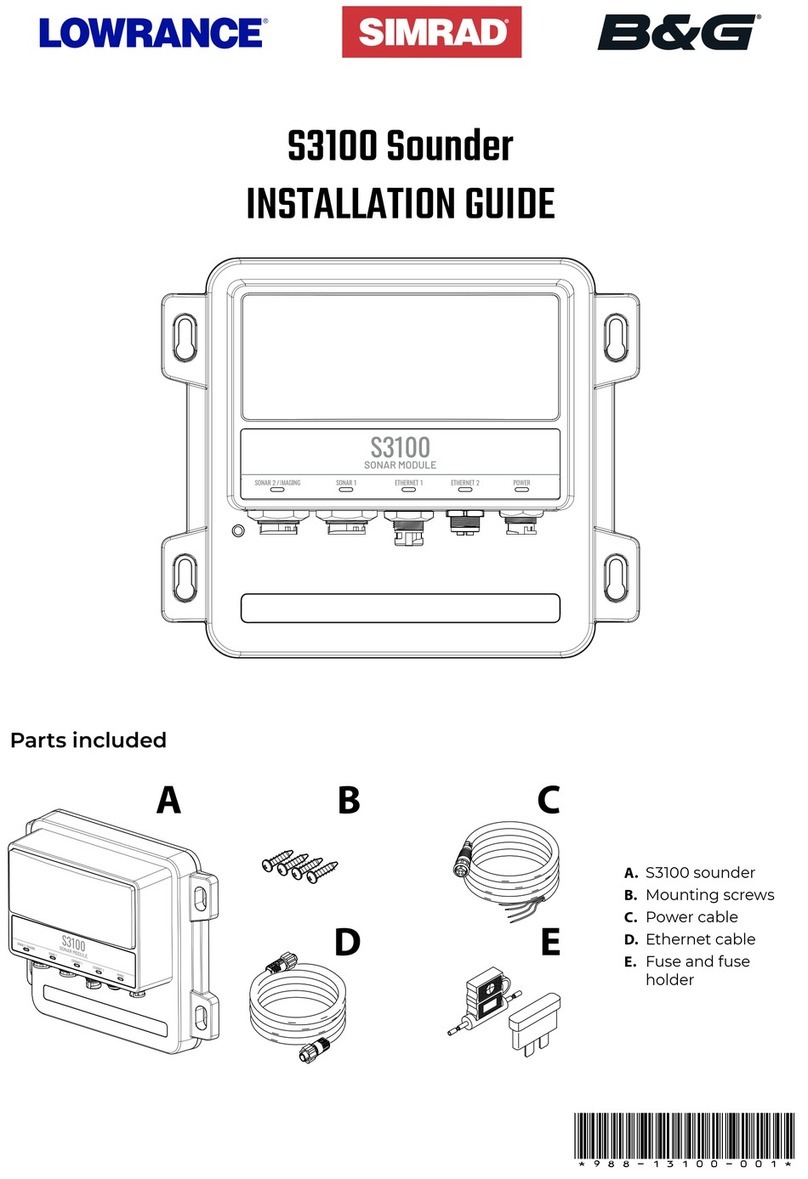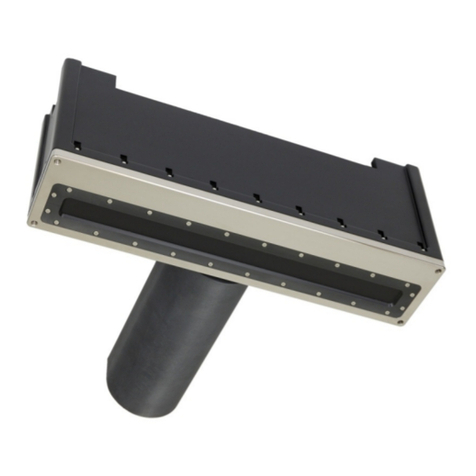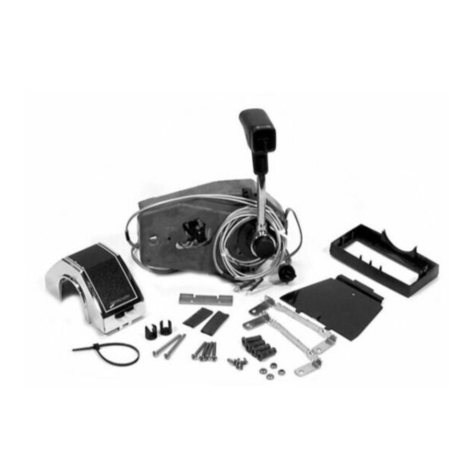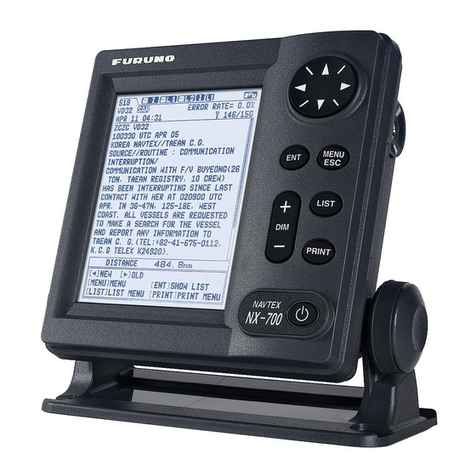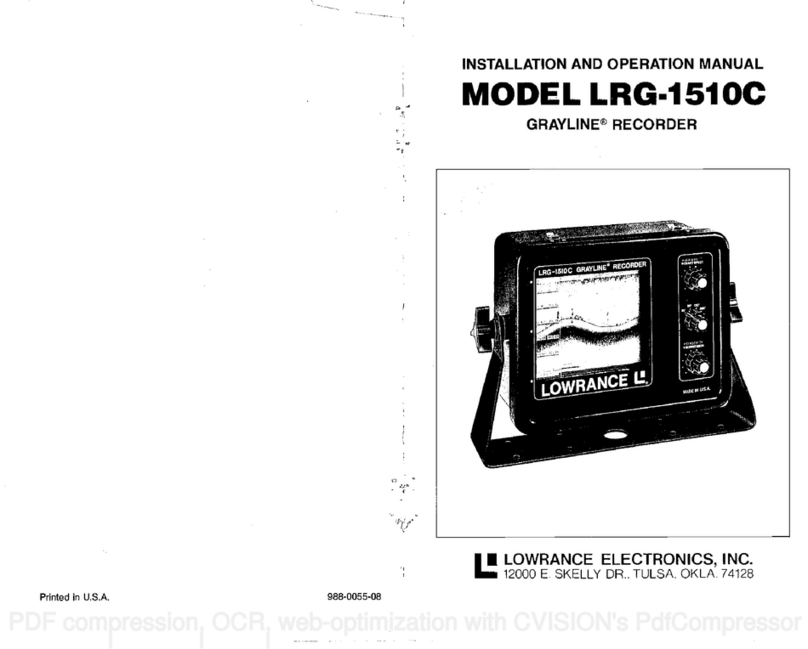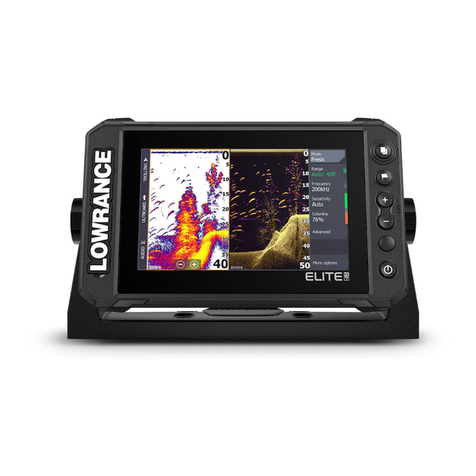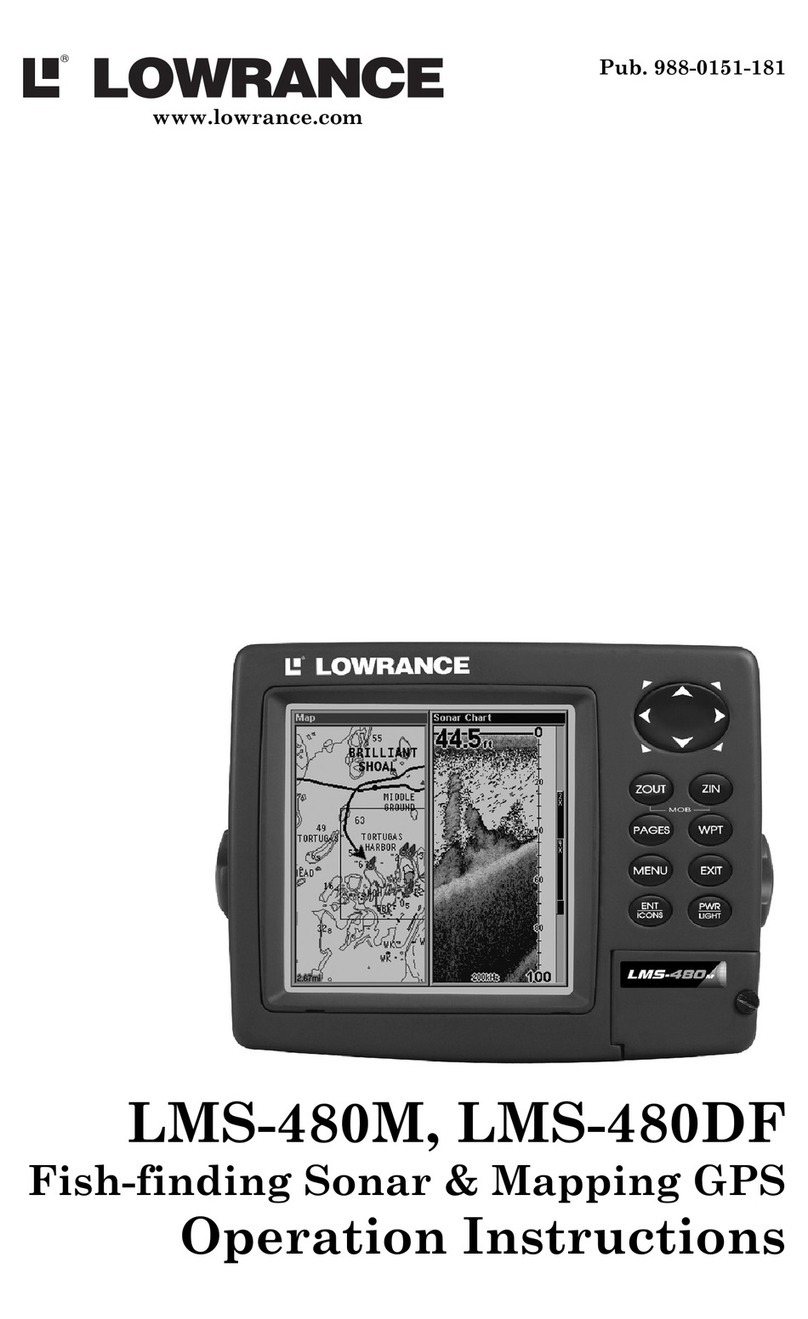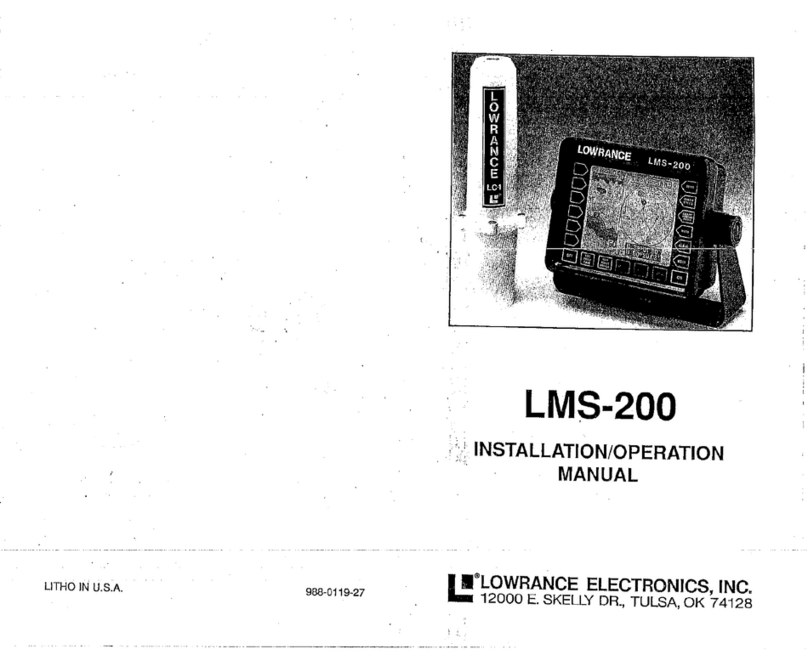
example, with theLOWER LIMIT
setto260 feet, theinitial
transmit pulsewidthwould be260
is.Ifthe LOWER LIMIT issetto
390 feet, theinitialtransmit
pulse
would be 390 jts. Finally,
from600feet and below, the
initialpulsewidth remains at600
micro-seconds.
Thetransmitter pulse
width can
be increasedfromthe initial point
atanytimeby rotating theSup-
pressorcontrol clockwise. The
maximumamount ofpulse
width
addedtotheinitialtransmitter
pulsewidth is approximately 800
microseconds.Inotherwords, if
the LOWER LIMIT is setto 420
feet, andthe Suppressor con-
trol isrotatedtothemaximum pos-
ition,thetransmitter pulse
width
would be 1220micro-seconds.
(420 initial +800 = 1220.)
Earlier,we talkedabout the rela-
tionship between pulse
width and
targetseparation. Aspulse
width
increases,targetseparation or
resolution isdegraded. However,if
thepulse widthisdecreased,
resolutionbecomes much better.
TheX-15allows youtotake
advantage ofthisfact bymaking it
possible tooverride the initial
transmitter pulsewidthsetting
fromwhatthe micro-computer
selects according tothe Lower
Limit.
Theiniti?l transmitter pulse
width canbesetfrom30 ts
to
2000ps by entering itonthe
keyboardas shown below. By set-
tingthe initial transmitter pulse
width to100 Its,athree-inch reso-
lutioncanbeobtained, 501as is
equivalenttoan inch and ahalf,
and 30j.ts initial transmitter pulse
width isequal toone inch resolu-
tion! No othergraph in themarket
today cangive youthis feature.
20:
Aftersetting the initial transmitter
pulse width,the suppressor con-
trol canstill beused tocancel out
noise
by increasing thepulse
width.
Forexample, ifaSOjLs initial
transmitter pulse
width isselected,
and theSuppressor control is ro-
tated tomaximum, thetransmitter
pulse
width would be850s.Re-
turning
theSuppressor control to
minimum will restore the unitto a
50 jistransmitter pulse width.
TheX-15will display theinitial
transmitter pulsewidthatthe bot-
tomofthepaper
when
youover-
ride the micro-computer To distin-
guishthe initial transmitter pulse
widthfromthedepth scaleprinted
onthepaper,azero isprinted in
frontofthe pulse widthsothatthe
twowill notbeconfused. For
example, a100 Its transmitter
pulse
width will be displayed on
thepaperas0100.A50 ts
transmitter pulse
width would be
displayed as 0050, whilea50-foot
depth will be displayed as 50.To
setthe initialtransmitter pulse
width, simplypress the amount of
pulsewidthdesired on the
keyboard, andthen press both the
LINES and SCALES keys atthe
sametime. (Note: Ifthelines
and/orthe scales wereturnedoff,
thiswillturnthem backon.To turn
thembackoff again, press either
theSCALES keyorthe LINES key
independently.Do notpress
them
simultaneously.)
Thiswilloverride themicro-
computer's selection and setthe
initialtransmitter pulse
width tothe
desired setting. (Note:When an
initialtransmit
pulse
width is set,
thiswidth will be fixed for alldepth
settings
until changed oruntil con-
trol isreturned tothemicro-
computer.)
ducer design and cone angle to
bestfityourspecific needs. Gen-
erally, wide cone angletransduc-
ers (20 degrees) are ideally suited
foroperating in shallow waterorat
medium depths. The20degree
cone angle allows youtosee
more oftheunderwater world.In
15 feet ofwaterthe20degree
transducer covers an areaofthe
bottom that'sabout 6feetacross.
The8 degree transducer covers
only about a2footcircle.
Thus, youwould usea20de-
greetransducer when looking for
fish orstructure, to easily find
drop-offs orreefs, and to seefish
thatare aroundyou . . . not
just
below you.However,the20de-
greetransducer won'tpenetrate to
greaterdepths aswellasthe 8
degree transducer,norwill itshow
asharp drop-off
aswell.In a
deep-water environment (100ft. or
deeper) orwhere you'relookingat
sharpdrop-offs, the narrow cone
angle cansometimes be more de-
sirable because itcanmoreaccu-
rately detectthe location ofthe
drop-off without
displayingthefish.
Indeep water, with the sound
energy being concentrated in a
• smaller area, the8degreetrans-
ducer canreach to greater
depths.
Both the 8degree and the20
degree Lowrancetransducers give
accurate bottom readings, even
though the bottom signal ismuch
wideronthe20degree model be-
cause
youare seeing moreofthe
bottom. Remember,theshallow
• edge ofthesignal shows
youthe truedepth. Therest of
thesignal tellsyouwhether
youare over rocks, mud, or
drop-offs. Thenarrow bottom sig-
nalofthe 8 degreetransducer
merely reveals less information
aboutthe bottom's contours. This
feature is particularly useful when
using
the X-15offshore.
1. TPD-1192-20Wideconeangle
(20 degree) forshoot-thru-hull
ortrolling
motormount.
2. TPD-1192-8 Narrow cone
angle(8degree)
forshoot-
thru-hull.
3. TI-lS-1192-20 Wideconeangle
(20degree)
forhighspeed
transom mountorshoot-thru-
hull.
4. TTH-2192-20 Wideconeangle
(20 degree)
forthru hull mount
ortransommount.
5. TTH-2192-8 Narrow coneangle
(8degree) forthruhull mount
ortransom mount.
Ill BASICOPERATION
On-offand Sensitivity Control
—
Rotate theOn/Off knobclockwise
toturntheuniton. The Sensitivity
knobworksmuchlikethevolume
control on a radio,that is, weaker
signalswill be detected with
5
PDF compression, OCR, web-optimization with CVISION's PdfCompressor
